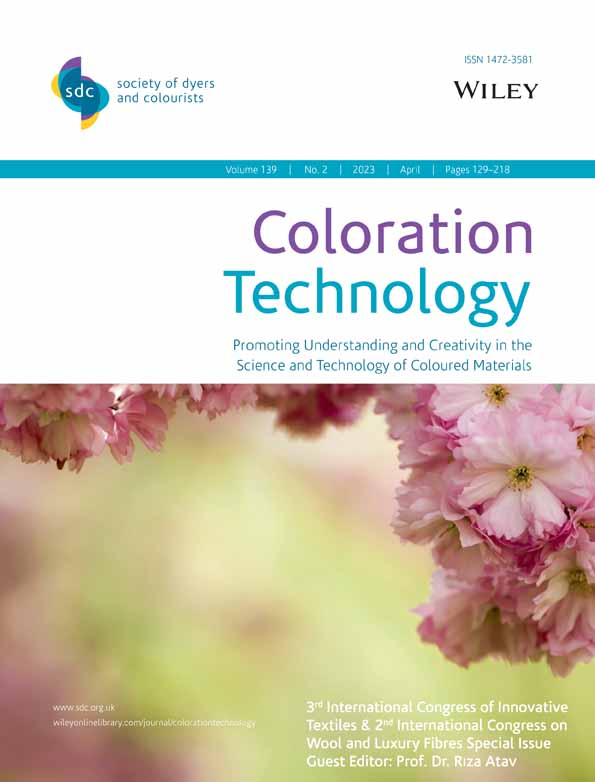Eco-friendly approach on wool pretreatment and effect on the wool structure and dyeability
Abstract
This research investigated the effect of various proteolytic enzymatic pretreatment on morphological and chemical features and the dyeability properties of wool fibres. Scoured merino wool fibres are treated with protease, papain, trypsin, and pepsin in specified conditions. Each enzyme activity measurement was provided by appropriate methods such as Bradford, BAPNA (N-benzoyl-1-arginine-p-nitroanilide), and BSA (Bovine Serum Albumin). Enzymatic processes were carried out for 24 h in the incubator set at 40°C, 100 rpm, and specified pH with 1 mg/ml enzyme concentration. Whiteness index (Stensby) and yellowness index (ASTM D 1925) were examined after enzymatic pretreatment. Pepsin and trypsin-treated wool fibres showed the highest whiteness index as 61.3 and 61.1, respectively whilst untreated wool fibres had 52.2. Fourier-transform infrared (FTIR) analysis revealed the increase in the intensity of amide-related bands and hydroxyl bands after enzymatic treatment. Scanning electron microscopy (SEM) photomicrographs manifested the cuticle layer is partially removed in enzyme-treated fibres. Elemental identification was provided by SEM–energy-dispersive X-ray spectroscopy (EDX). It appears that the sulphur bonds decreased after the treatment and the pepsin-treated fibres have fewer bonds of all. To examine the damage to the structure, photomicrographs were taken using fluorescence and light microscopes. The alkali solubility test (ASTM D1283) was also conducted to compare different enzyme types. Wool fibres were dyed in 2.0% concentration with reactive dyestuff. Dyeability and colorimetric features of fibres were measured by a spectrophotometer. The washing fastness test showed that all the samples have good results and the colour change after washing was better in enzyme-treated samples (grade 5) compared to untreated wool fibres (grade 4–5).
CONFLICT OF INTEREST
The authors declare no conflict of interest.




